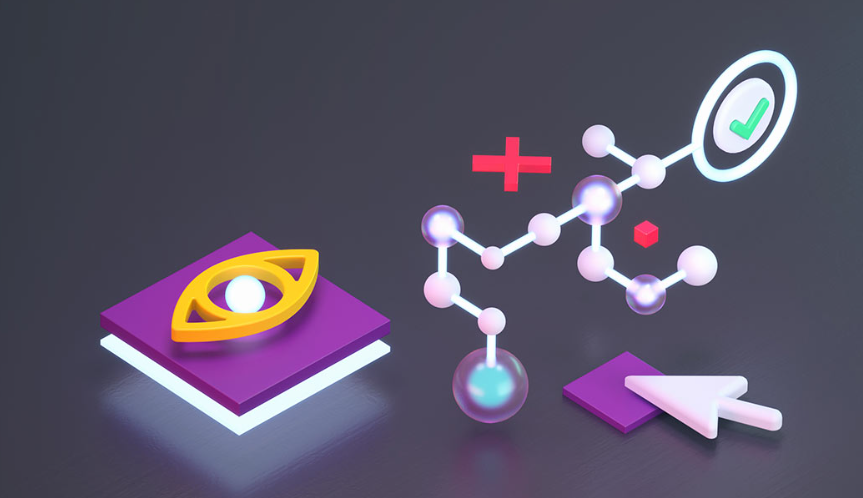From Scripts to Autonomy: How AI is Redefining End-to-End (E2E) Testing

AI e2e testing is changing how organizations evaluate intricate digital ecosystems and is becoming a factor in modern software quality assurance. Once primarily dependent on manual effort, traditional end-to-end testing eventually developed into programmed automation frameworks. However, these methods frequently failed when confronted with dynamic interfaces, quick release cycles, and erratic user behavior.
AI brings intelligence into automation, allowing for self-healing test cases, dynamic workflows, and predictive insights that more truly replicate actual user journeys. This development not only increases productivity but also aligns testing with the rapidity of contemporary software development.
Evolution of End-to-End Testing
E2E testing has evolved tremendously in response to similar changes in software development methodologies overall. Traditionally, E2E tests required testers to manually execute the actual user journeys step-by-step. This was laborious and prone to human error.
While record-and-playback systems offered the first level of efficiency with the advent of automation, they were rigid. After that, the area changed as automation framework scripts (such as Playwright, Cypress, and Selenium) made it possible to create more complex and reusable test cases.
However, these scripts frequently displayed fragility as they would malfunction anytime the API or user interface changed. Since testing is progressing toward AI-driven autonomy, which leads to the dawn of a new era of E2E testing. It is scalable, resilient, and focused on the organization’s growth, wherein tests are intelligent, adaptive, and self-healing.
See also: What Factors Determine the Top-Rated Plumbers in Tacoma?
AI Foundations in Software Testing
Artificial Intelligence (AI) foundations in software testing are based on the use of machine learning, natural language processing, and intelligent pattern recognition to advance traditional testing approaches. AI adds flexibility and decision-making capabilities to the process of automation, which relies on programmed rules.
Machine learning models analyze extensive datasets of test executions, user activity, and defect histories. This allows for the prioritizing of high-risk areas and the adjustment of testing priorities. Natural language processing enables the development of executable test cases from requirements expressed in readable human language or user stories. By doing this, the gap between corporate intent and technological validation is filled. The ability of computer vision to recognize and interact with visual elements on a screen allows automated systems to do visual regression testing and robust user interface testing.
Reinforcement learning offers additional advantages because it allows applications to discover and explore flows on their own. Together, these ideas act as a whole to establish the best foundation in AI for a new era of software testing, intelligent, resilient, and responsive to the pace of development in today’s world.
How AI is redefining End-to-End testing from scripts to Autonomy?
AI-driven testing that is independent and autonomous has significantly replaced script-based automation in quality assurance. Unlike static scripts that malfunction, AI-driven systems can be clever, adaptable, and learn from real-life scenarios. The main ways AI is changing E2E testing are listed below:
Self-healing tests
AI recognizes modifications within application interfaces and automatically modifies hang locators, avoiding failures due to minor UI changes. This contributes to lower maintenance costs and ensures test suites continue to be robust even as applications change quickly from version to version.
AI-driven object recognition
Rather than depending on fragile locators, AI can identify UI elements through image recognition and context awareness. Ensuring testing is resistant to device differences, screen resolutions, and design changes with less need to manually update scripts.
Automated test generation
AI creates test cases automatically by analyzing application logs, requirements, and user stories. This reduces the need for human scripting while guaranteeing thorough coverage of both important procedures and edge cases that conventional methods frequently overlook.
Intelligent test data management
An essential element of E2E testing’s AI transformation is Intelligent Test Data Management, which creates possibilities for tests to run in a more intelligent, rapid, and reliable manner. It has always been challenging to manage consistent and safe test data across environments. However, with real-time masking, clever pattern recognition, and synthetic data synthesis, AI-driven automation has simplified this.
Cloud platforms such as LambdaTest KaneAI, a GenAI-native testing agent that empowers teams to plan, author, and evolve tests using natural language. Built from the ground up for high-speed quality engineering teams, it integrates seamlessly with LambdaTest’s suite of offerings, including test planning, execution, orchestration, and analysis.
By leveraging its AI agent for QA testing, LambdaTest KaneAI enables dynamic test data pipelines that automatically adapt to evolving application environments. This agent ensures test data aligns precisely with changing scenarios, user flows, and compliance requirements, intelligently eliminating duplication and generating realistic, scenario-specific data.
As a result, teams can achieve faster test execution, higher accuracy of results, improved data security, and continuous testing at scale without manual intervention. In modern testing environments, LambdaTest KaneAI bridges the gap between automation speed and data integrity, making Intelligent Test Data Management more effective than ever.
Adaptive learning from execution results
AI continuously learns from previous executions, identifying high-value cases, repetitive checks, and flawed tests. By putting stability and business relevance ahead of case volume, this adaptive strategy guarantees that test suites get better over time.
Predictive defect detection
Taking into account past defect patterns, AI can estimate the highest probability for defects to occur. Testers can then apply resources to these high-risk areas, enabling the ability to detect defects earlier. This helps to avoid expensive defects from making their way into the generation of results.
Exploratory testing with AI agents
AI agents can independently navigate apps due to reinforcement learning, which also identifies unforeseen problems and performance issues. This improves scripted routes and provides more thorough insights about the stability and usability of apps by looking at areas that users might overlook.
Continuous testing in CI/CD
Artificial Intelligence provides robust endpoint test orchestration in continuous integration or continuous development (CI/CD) pipelines. This autonomously prioritizes, executes, and analyzes tests. By doing so, feedback loops are quicker, bottlenecks are eliminated, and eventually quality checks are aligned to the model of modern DevOps practice.
Scalable testing
Historically, script-driven frameworks such as Playwright, Cypress, and Selenium have been the foundation of end-to-end testing frameworks. Although this framework offered automation, it required a great deal of technical know-how and maintenance. AI-enabled testing frameworks can easily adapt to application complexity and growing test suites. This does not require ever-increasing hours of maintenance, sustaining quality assurance in today’s fast-paced world.
Benefits of AI-Driven E2E Testing
AI-powered E2E testing is an advancement that alters quality assurance, accuracy, and scope. It is more than just an automated advancement. AI offers significant benefits that improve software delivery and overall application quality by upgrading intelligent flexibility for brittle scripts. They are:
- Reduced maintenance effort: AI self-healing capabilities reduce the need for manual modifications. This lessens script fragility and relieves testers from maintenance work. The benefits are reduced time expenditure to maintain scripts and reliability of tests with frequent application changes.
- Broader test coverage: AI detects and creates test cases for a greater variety of situations, including edge cases that human scripts frequently overlook. This guarantees more thorough validation, boosting trust in the caliber of the final output.
- Higher test accuracy: AI accurately identifies defects with pattern recognition and predictive analytics. This improves differentiation, enhances increases in defect detection, and increases confidence in tests.
- Increased efficiency: By allowing testers to concentrate on higher-value quality improvement activities, AI enables automated testing, execution of tests, and assessment of the tests. This minimizes resource investment and fast-tracks the testing efforts.
- Enhanced tester productivity: The automation of difficult tasks frees up testers’ time for strategy, analysis, and exploratory testing. This enables testers to make the most of their knowledge in a way that enhances their function and encourages creativity in the quality assurance process.
The Core Challenges of Script-Based Testing
Earlier, end-to-end (E2E) automation relied on a large number of script-based tests. Now that applications are more agile and dynamic, script-based testing is starting to show serious limitations. There were instances in script-driven testing that could not keep pace with the constant changes introduced by current development methodologies, dynamic APIs, and rapidly changing UI. Below is the list of challenges of script-driven testing.
- Fragility of scripts: Automated tests usually rely on static locators, such as their XPath or CSS selector. Even a minor change in the UI, where the ID of an element is renamed or the layout, could cause the tests to fail and need maintenance.
- Narrow coverage of real-world flows: Outlier instances and new user conventions that emerge after testing in a particular script are not covered by scripts, which typically check preset pathways. Therefore, there may be some branch coverage of the unrehearsed possible critical workflows.
- Inability to self-heal: Script-based frameworks lack intelligence. They cannot automatically adapt when application changes occur, requiring human intervention for every broken locator or altered flow.
- Steep skill requirements: To write and maintain scripts, testers need programming skills. This inhibits collaboration and extends the testing cycle by creating a barrier for non-technical testers.
- Poor scalability in Agile/CI environments: When development accelerates, it is hard to scale testing performed by scripts. As in most cases, it takes longer to update tests than it does to release new functionality. This causes test suites to lag behind the application.
Future of Autonomous Testing
Integrating intelligence, adaptability, and self-governance across the software lifecycle is the aim of autonomous testing. Artificial intelligence will revolutionize scripted automation by enabling fully autonomous test generation, execution, and optimization through continuous learning.
Without human assistance, advanced AI bots will be able to validate intricate user itineraries, foresee problems, and operate across systems. Predictive analytics will assist in moving quality judgment into a proactive function, allowing assurance in quality before something fails.
AI integration to the DevOps pipeline will happen and make end-to-end testing a self-sufficient ecosystem. Change quality assurance from a reactive process into a self-sustaining, intelligent platform that supports continuous software development.
Conclusion
In conclusion, the move from scripting to autonomy is a big shift in E2E testing. AI-based approaches can be versatile, robust, and business-aligned while eliminating the drawbacks and restrictions of conventional scripts since they provide testing.
AI transforms quality assurance from a reactive to a proactive and intelligent process by enabling self-healing, continuous learning, and predictive insights. It ensures that the software stays as current as new developments while providing scalable quality and user satisfaction.





